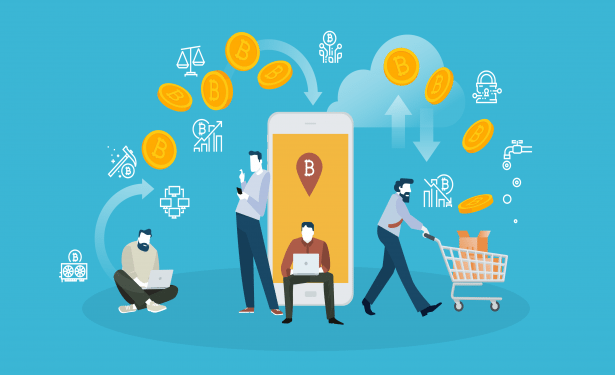Ever since it was created a decade ago, the immense potential of cryptocurrency markets has caught the fancy of millions around the globe. There are thousands of cryptocurrencies today trading in billions of dollars every day.
If you are someone who wants to learn more about this exciting phenomenon or want to explore investing in it, you may need to know the basic crypto glossary. Terms, which will help you navigate your way through the fast-paced crypto markets.
Read on to know more.
1.Blockchain
A blockchain is a digital ledger of transactions that is shared among the computer network nodes. Every time someone sends or receives cryptocurrencies, it gets recorded on a blockchain. The technology of blockchain makes it possible for businesses and people to transfer value digitally without the need for an intermediary. These intermediaries include a bank, guarantor, or credit card company.
2.Cryptocurrency
Also known as digital currency or crypto, a cryptocurrency is a form of currency that exists only digitally and doesn’t have a physical form like coins or banknotes. It is secured by cryptography that safeguards all currency-related transactions through advanced coding mechanisms. This currency doesn’t have any central issuing authority and operates in a decentralized system. Today, thousands of cryptocurrencies exist ranging from meme coins to penny cryptocurrencies, which is the cheapest cryptocurrency.
3.Fiat
Fiat money is the money issued by the government. So, for a person living in India, fiat money will be the Indian Rupee and for someone in the United States, it means the USD. Fiat money is not backed by any commodity such as gold or silver. Instead, it is issued by the government. This money is a way by which the central banks exert control over economies.
4.Altcoins
Any other currency besides Bitcoin is known as an altcoin or ‘alternative currency’. Since they are often derived from Bitcoin, there are shared characteristics. These include peer-to-peer networks and smart contacts.
5.Exchange
Also known as digital currency exchange (DCE), it is a digital marketplace that allows users to trade in cryptocurrencies or convert their crypto into regular currency. There are three types of exchanges- decentralized, centralized, and hybrid.
6.Wallet
A crypto wallet allows you to store, send, and receive your crypto. However, the crypto is not saved in this wallet per se. Instead, it allows you to interact with crypto blocks on the blockchain.
The wallet stores addresses, which allows the users to transfer their coins elsewhere.
These wallets are of two kinds- software wallets that are computer programs and hardware wallets that are physical device that needs to be plugged into a computer.
7.Liquidity
To trade in crypto, it is critical to understand what is liquidity. Liquidity is the ability of a coin to be converted into cash or other cryptocurrencies. High liquidity means that there are a large number of people buying and selling crypto and indicates stability in the market.
Low liquidity means that the market is volatile and there are sharp spikes in the prices.
8.DeFi
Short for decentralized finance, DeFi means a system where users can access financial products on a decentralized blockchain without any intermediaries like brokerages or banks. These transactions work on peer-to-peer relationships.
9.Minting
In terms of crypto, minting is the process of creating new coins by creating new blocks and authenticating data. This also involves recording information on the blockchain according to the proof-of-stake protocol. Coins, once minted are added to the total circulation that’s open for trading.
10.HODL
This means ‘Hold on for dear life’. In crypto parlance, this simply means holding on to a currency that you believe will gain more value despite seeing a dip in its price.
To learn more and keep yourself updated, log onto Coinswitch.
Follow Techdee for more!





